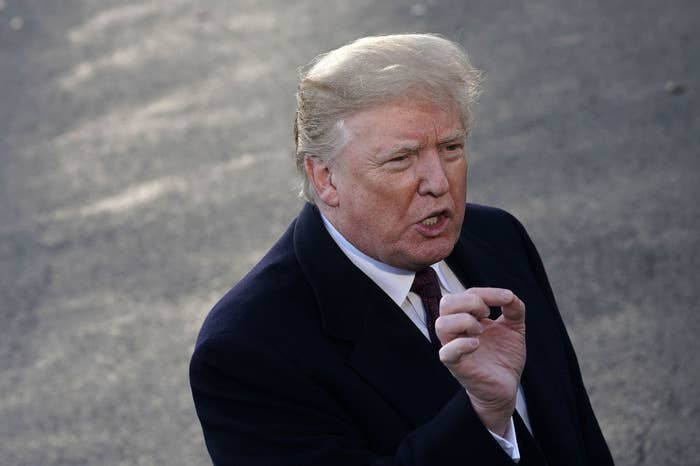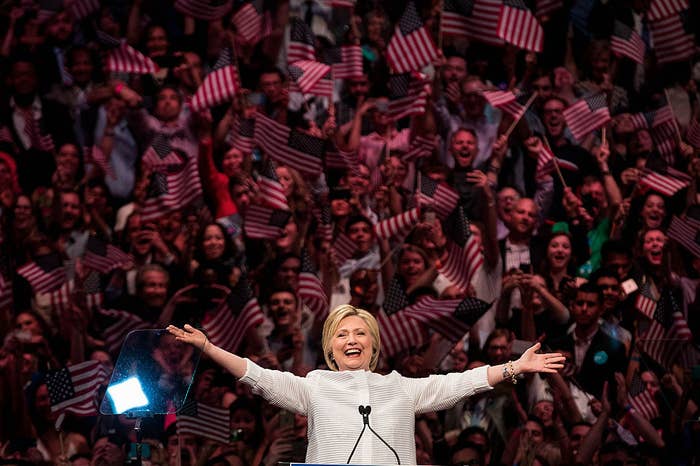
A mounting body of scientific evidence is showing that people's assessments of whether or not something is true is really easily manipulated by cues as simple as photographs, or good-quality audio.
A study published in March found that people were less likely to believe an academic researcher on the radio if the audio quality of the recording was poor or glitchy.
The study involved 97 participants, who were instructed to listen to recordings of different pieces of science news and assess the quality of the research and the researcher who was reporting it.
Half of the audio recordings were edited to sound as though they were recorded on a bad phone line. The listeners who heard these recordings rated the credibility of the researcher and the studies they were discussing as significantly less favourable than recordings with higher audio quality.
Lead author of the study, Dr Eryn Newman, from the Australian National University (ANU) Research School of Psychology, told BuzzFeed News that even if participants were told that the person speaking was a reputable academic from a good university with a large number of research grants, the results remained the same.
"If we put a crackle in the phone line, people thought the researcher was less impressive, less intelligent, and the research was less important," said Newman.
Newman has been investigating how people evaluate truth and how they are duped into believing fabricated statements since 2011, well before the tide of fake news that accompanied the 2016 US presidential election.
"I used to really struggle to find real-world examples to link this research to," she said.

Newman's research focuses on the idea of "truthiness" – a term borrowed from the 2005 pilot episode of Stephen Colbert's Comedy Central TV show The Colbert Report.
The concept of "truthiness" is all about intuition: believing something to be true doesn't rest on critical analysis, it is mediated by automatic cognitive processes.
"Truthiness" is less about thought and more about emotional response "because that's where the truth comes from ladies and gentlemen, the gut," said Colbert.
"What we find in our research really robustly is that we can push around people's feelings of truth using things like photographs and audio quality, and even the ease of pronouncing someone's name," said Newman.
In 2012 Newman co-authored another paper with studies that found photographs can inflate the sense of "truthiness" that people get from reading a statement.
The sort of photographs that the researchers used for this research were "non-probative", meaning that they didn't actually contain any information about the claims being made.
One study included in the paper found that if participants were given a trivia statement such as "Macadamia nuts are in the same evolutionary family as peaches", they were more likely to believe the statement was true if a photograph of macadamias simply appeared alongside the sentence.
Newman said the effects of the photographs surprised her because they weren't using images that were helpful at all.
In 2014 Newman led another study that found if claims came from authors with names that were easier to pronounce, people were more likely to believe those statements as fact.
While this could be construed as a product of xenophobia, the ease of pronounciation effect was seen across the globe and even within different regions of the same country.
Our criteria for judging truth appears to come from social consensus (if others believe it), compatibility with what people already believe, coherence of the story, the source of the information, and supporting evidence.
The ease of cognitive processing when it comes to digesting a statement also has a huge impact, and that's why photographs, audio quality and the author's name can all factor into people's decisions about truth, says Newman.
Newman is worried about the consequences that these biases have as people increasingly consume their news on social media platforms.
"I think the speed at which we're processing information is a huge factor here. People are more likely to make errors when they're making quick decisions about what they encounter."
As it turns out, people are also really poor at self-regulating their decisions about whether or not to believe statements.
Newman notes that in her research, she asks participants at the end of experiments to assess whether or not they were manipulated by imagery or the quality of audio, and that people are rarely aware of these biases in their decision-making.
"It's quite insidious in the way that it forces people's decisions, that's what scares me," she said.
Newman says this makes it difficult to produce guidelines on how to avoid believing fake headlines.
"Last year I saw this happening a lot, the media were coming out with a recipe to detect fake news ... things like, 'Think more critically', and when you give people that advice, as it turns out it doesn't actually protect them from some of the cognitive biases we see."
Newman and a team of researchers at ANU are now conducting studies on how to combat these manipulations and make people more discerning about their choices around belief.
